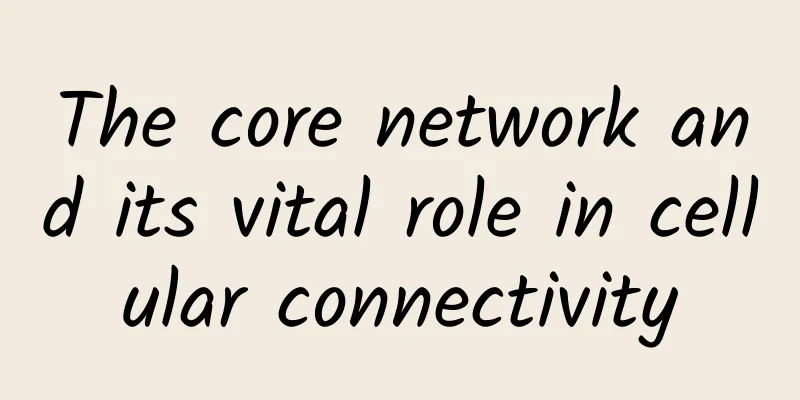5G is more complex than you think

|
In the future, 5G networks are developing in the direction of diversification, broadband, integration, and intelligence. With the popularization of various smart terminals, mobile data traffic will show explosive growth in 2020 and beyond. The requirements for 5G communication technology will also become higher and higher in the future. Compared with 1G/2G/3G/4G networks, some communication technologies that are essential for 5G networks have been developed. For example, ultra-dense heterogeneous networks. In the future 5G network, reducing the cell radius and increasing the number of low-power nodes are one of the core technologies to ensure that the future 5G network supports a 1,000-fold increase in traffic, which will form an ultra-dense heterogeneous network. In the future, ultra-dense heterogeneous networks will become the key technology for 5G networks to increase data traffic.
A network architecture is used to define how computer devices and other devices are connected together to form a communication system that allows users to share information and resources. It provides a way to design software and hardware that can collaborate with other manufacturers' products. Communication is the basic goal of any network architecture. In any case, a protocol is a set of rules and procedures that define how communication occurs at different levels of operation. Some layers define physical connections, and upwards are some protocols for establishing connections and communicating between systems. Upwards, it defines how applications access low-level network communication functions and how to connect to other applications on this network. 5G communication technology connects shared communication resources. In the future, wireless networks will deploy more than 10 times the number of existing wireless nodes. Within the coverage area of the macro station, the distance between sites will be kept within 10 m, and support the provision of services to 25,000 users within every 1 km2. At the same time, the ratio of the number of active users to the number of sites may reach 1:1, that is, there is a one-to-one correspondence between users and service nodes. The densely deployed network shortens the distance between terminals and nodes, greatly improving the power and spectrum efficiency of the network, while also expanding the network coverage, expanding the system capacity, and enhancing the flexibility of services between different access technologies and coverage levels. Although ultra-dense heterogeneous network architecture has great development prospects in 5G, the reduction in the distance between nodes and the increasingly dense network deployment will make the network topology more complex, which is prone to incompatibility with existing mobile communication systems. In 5G mobile communication networks, interference is a problem that must be solved. The main types of interference in the network include: co-frequency interference, interference in shared spectrum resources, interference between different coverage levels, etc. The interference coordination algorithm of the existing communication system can only solve the problem of a single interference source, but in 5G networks, the transmission loss of adjacent nodes is generally not much different, which will lead to multiple interference sources with similar strengths, further deteriorating network performance, making it difficult for existing coordination algorithms to cope with. QoS (Quality of Service) is a network that can use various basic technologies to provide better service capabilities for specified network communications. It is a network security mechanism and a technology used to solve problems such as network delays and congestion. In the development of 5G communication technology, due to the great differences in QoS requirements between services and users, 5G networks need to adopt a series of measures to ensure system performance. Generally, under normal circumstances, if the network is only used for specific time-independent application systems, QoS is not required, but it is very necessary for critical applications and multimedia applications. When the network is overloaded or congested, QoS can ensure that important business volumes are not delayed or discarded, while ensuring the efficient operation of the network. Under the guarantee of QoS, 5G communication technology accurately and effectively perceives adjacent nodes, which is a prerequisite for large-scale node collaboration. In ultra-dense networks, dense deployment leads to a sharp increase in the number of cell boundaries, and the irregular shape leads to frequent and complex switching. In order to meet the mobility requirements, new switching algorithms are bound to emerge; in addition, network dynamic deployment technology will also become a research focus. Due to the suddenness and randomness of the opening and closing of a large number of nodes deployed by users, the network topology and interference have large-scale dynamic change characteristics; and the small number of service users in each small station is also prone to drastic dynamic changes in the spatial and temporal distribution of services. Compared with the past, the experience of 5G communication technology will be more advanced, so the network improvement content required will also be more complex, and this is just a small part of the fifth-generation communication technology. |
<<: Web designer secrets: 10 tips to save you time and effort
>>: The Best Open Source Network Monitoring Tools of 2017
Recommend
It’s time to show the real technology! See 5G+IoT=?
The Internet of Things is already booming, and it...
DediPath July Promotion: 50% off all VPS/HybridServers/Dedicated Servers, multiple data centers in Los Angeles/San Jose, etc.
DediPath has released this month's promotion ...
Megalayer regular VPS 50% off from 24 yuan/month, special VPS annual payment from 199 yuan, Hong Kong/Philippines/US data centers
Megalayer is offering a 50% discount promotion fo...
[Black Friday] spinservers: $270 off San Jose high-end servers, dual E5-2683 v4, 512G memory, 2*3.83T SSD, 10Gbps bandwidth
There are still a few days before Black Friday, a...
Crowd selection and data service practice based on MaxCompute + Hologres
Basic logical architecture of the crowd selection...
Talk about what you want to know and don't know about SDN
SDN has been very popular for a while. For a whil...
Israel enters the 5G era: commercial licenses issued, three major operators quickly launch services
Beijing time, October 6 evening news (Jiang Junmu...
Germany approves Huawei 5G, says it will remain open to competing technologies
After successively losing important markets such ...
Aruba ESP Announces Major Update to Cloud Native Services to Automate and Accelerate Deployment and Protection of Edge-to-Cloud Networks
Aruba, a subsidiary of Hewlett Packard Enterprise...
5 Network Troubleshooting Software, Which One Do You Use?
By using a handy network troubleshooting app, you...
What hurdles do 5G mobile phones need to overcome before they can be launched on the market?
Recently, more and more mobile phone manufacturer...
Aruba's next-generation network solution revolutionizes traditional network management
Aruba, the world's leading provider of next-g...
Meta and Microsoft integrate Workplace and Teams to provide new features
[[436945]] Microsoft Teams users can now access a...
China Unicom begins deploying 2G network and stops all services
2G outdated communication technology will inevita...
How 5G will shape the future of construction
5G is an enabler that will deliver new capabiliti...









